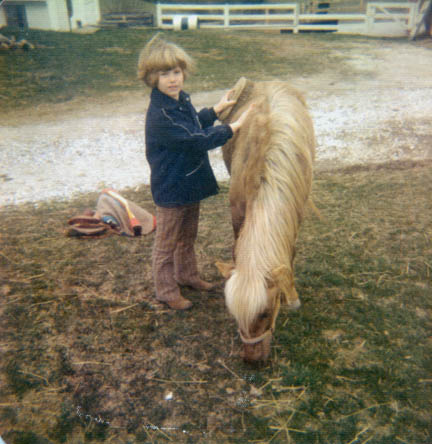 I was born right when
I was born right when I past through the vapor trail of this fading phenomenon, playing Cowboys ‘n Indians with my friends as a virtual reflex, a boyhood tradition past down from my older brother and, quite likely, my father before him. I doubt, however, that I shared their enthusiasm for the milieu. My aunt and uncle owned a horse farm when I was young, so I did have first-hand experience with saddling horses, riding horses, and even cleaning out their stalls. Still didn’t make me a cowboy at heart. The closest I came to feeling like a western hero was when my dad got me a Lone Ranger outfit for my seventh birthday. What a thrill to wear the white hat and strap that silver cap-gun to my hip. Oh yeah, and inhaling the smoke from the barrel after the gun was fired (actually, it was a nasty little high which usually nauseated me. Don’t try this at home, kids).
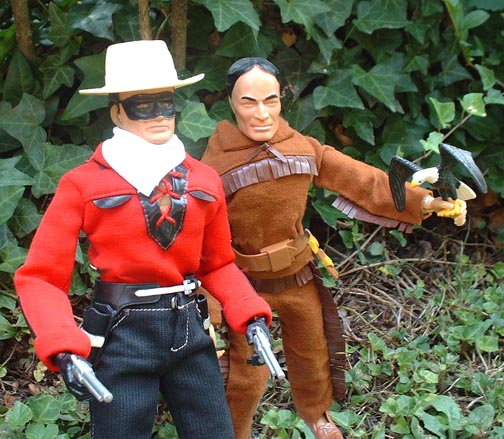 My earliest western memory is watching The Lone Ranger cartoon in the late 60s. Clearly, The Wild, Wild West was the inspiration for this animated take on the radio show character since the art style reflects the look of TWWW’s opening credit sequences. Also, this Lone Ranger couldn’t be bothered with mundane issues like stagecoach robbers and cattle rustlers, instead taking on magical sorceresses, aliens, and villains in submarines. Even then, animators knew it would take more than the usual western clichés to hold the interests of early Gen-Xers.
My earliest western memory is watching The Lone Ranger cartoon in the late 60s. Clearly, The Wild, Wild West was the inspiration for this animated take on the radio show character since the art style reflects the look of TWWW’s opening credit sequences. Also, this Lone Ranger couldn’t be bothered with mundane issues like stagecoach robbers and cattle rustlers, instead taking on magical sorceresses, aliens, and villains in submarines. Even then, animators knew it would take more than the usual western clichés to hold the interests of early Gen-Xers.
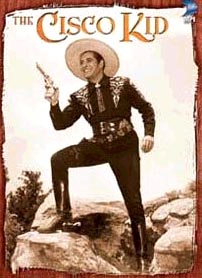 I still could enjoy some of the fast-paced half-hour western shows from the 50s which were aired in syndication, like The Lone Ranger, Hopalong Cassidy, and The Cisco Kid. I especially enjoyed The Cisco Kid, although it was a bit of a challenge to catch it since it aired in my hometown at 6 a.m. on Saturday mornings. I would struggle to pull myself out of bed, sneak down to the living room, and turn the t.v. on at a barely audible volume so as not to disturb my family. There was something irresistible about the show, however. Duncan Reynaldo as The Kid and Leo Carillo as Pancho made an amiable pair, and the stories were lightning fast, perfect for my equally fleeting attention span.
I still could enjoy some of the fast-paced half-hour western shows from the 50s which were aired in syndication, like The Lone Ranger, Hopalong Cassidy, and The Cisco Kid. I especially enjoyed The Cisco Kid, although it was a bit of a challenge to catch it since it aired in my hometown at 6 a.m. on Saturday mornings. I would struggle to pull myself out of bed, sneak down to the living room, and turn the t.v. on at a barely audible volume so as not to disturb my family. There was something irresistible about the show, however. Duncan Reynaldo as The Kid and Leo Carillo as Pancho made an amiable pair, and the stories were lightning fast, perfect for my equally fleeting attention span.
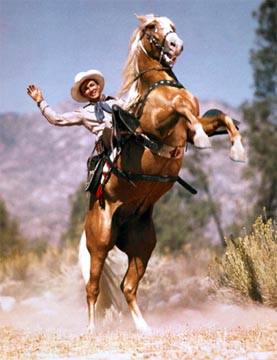 By the time I was 11, our local independent station, WBFF-TV Channel 45, started airing what amounted to an old-fashioned Saturday afternoon at the movies. Between 1 and 4 p.m. every Saturday, they would show a chapter from a cliffhanger, a short subject like Laurel & Hardy, and a western. For about two or three years in the mid-70s, I was given a crash course in early horse operas. I have to say I preferred Roy Rogers over all the rest. He had a certain sincere quality and humble demeanor that defined what an American hero should be. Most of the others, like William Boyd or Randolph Scott, had that tough talking, wise guy thing which always rubbed me the wrong way. Sometimes it felt like the good guy was ruder than the villain. Not so with Roy Rogers. He was always soft spoken, earnest, and polite, even when he was pointing a six-shooter at a cattle rustler’s abdomen. As for Gene Autry, give me a break. He looked like the pharmacist from the corner drugstore.
By the time I was 11, our local independent station, WBFF-TV Channel 45, started airing what amounted to an old-fashioned Saturday afternoon at the movies. Between 1 and 4 p.m. every Saturday, they would show a chapter from a cliffhanger, a short subject like Laurel & Hardy, and a western. For about two or three years in the mid-70s, I was given a crash course in early horse operas. I have to say I preferred Roy Rogers over all the rest. He had a certain sincere quality and humble demeanor that defined what an American hero should be. Most of the others, like William Boyd or Randolph Scott, had that tough talking, wise guy thing which always rubbed me the wrong way. Sometimes it felt like the good guy was ruder than the villain. Not so with Roy Rogers. He was always soft spoken, earnest, and polite, even when he was pointing a six-shooter at a cattle rustler’s abdomen. As for Gene Autry, give me a break. He looked like the pharmacist from the corner drugstore.
Aside from a revival of The Lone Ranger cartoon in the early 80s, the western motif faded from the childhood lexicon of fantasy. By then, Star Wars had taken hold of everyone’s imagination. Of course, Han Solo and the border town of 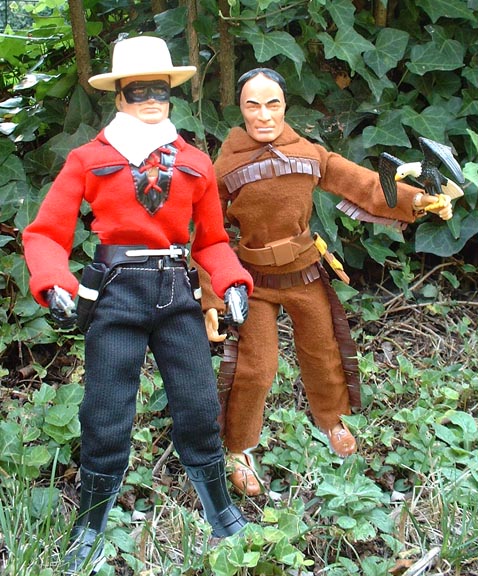




No comments:
Post a Comment